The expansion of scientific contemplation in modern India can be credited to the scientists of the century. Scientists include experimentalists who perform experiments to test hypotheses and theoreticians who develop theories and models to explain existing data and predict new results. There is a continuum between these two activities with many scientists performing both tasks. India has a rich history of scientists whose work has been highly appreciated across the globe. Many Indian scientists created history by changing the world and setting benchmarks of innovation. Much of the scientific research work currently in progress follows the lead of thinkers from India.
Our salutes go to some of the greatest living legends of Indian science who contributed majorly to the way Indian science is shaped today and have been honoured with Padma Vibhushan, the second highest civilian awards of the country.
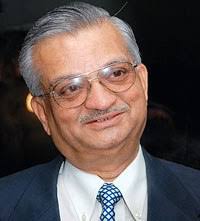
Anil Kakodkar: Anil Kakodkar is an Indian nuclear physicist and mechanical engineer. He believes that India should be self-reliant in energy, especially by use of the cheap national thorium resources. He contributed significantly for designing the Advanced Heavy Water Reactor, which uses thorium-uranium 233 as the primary energy source with plutonium as the driver fuel. The unique reactor system, with simplified but safe technology, will generate 75 per cent of electricity from thorium. Apart from playing a major role in India's nuclear tests asserting sovereignty, Kakodkar champions India's self-reliance on thorium as a fuel for nuclear energy. He was the chairman of the Atomic Energy Commission of India and the Secretary to the Government of India, he was the Director of the Bhabha Atomic Research Centre, Trombay from 1996–2000. He was awarded the Padma Vibhushan, India's second highest civilian honour, on 26 January 2009.
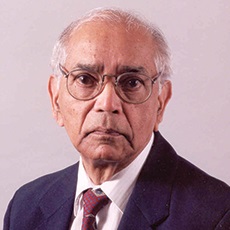
Calyampudi Radhakrishna Rao: C.R. Rao is an indigenous personality who needs no introduction to statisticians, mathematicians, scientists or engineers. Rao received recognition from all statistics societies for his pioneering contributions to statistical theory and applications. He is among the worldwide leaders in statistical science over the last five decades. His research, scholarship and professional service had a profound influence on the theory and applications of statistics and are incorporated into standard references for statistical study and practice. Rao’s contributions to statistical theory earned him a place in the history of statistics. For his pioneering work he was awarded Samuel Wilks Medal of American Statistical Association 1989, National Medal of Science 2003, India Science Award 2009, Guy Medal in Gold of the Royal Statistical Society 2011, Mahalanobis Birth Centenary Gold Medal 1996, Bhatnagar Award 1963, International Mahalanobis Prize 2003. Moreover, the Ministry of Statistics and Programme Implementation, The Government of India has instituted a National award in honour of C. R. Rao, the renowned statistician of the country.
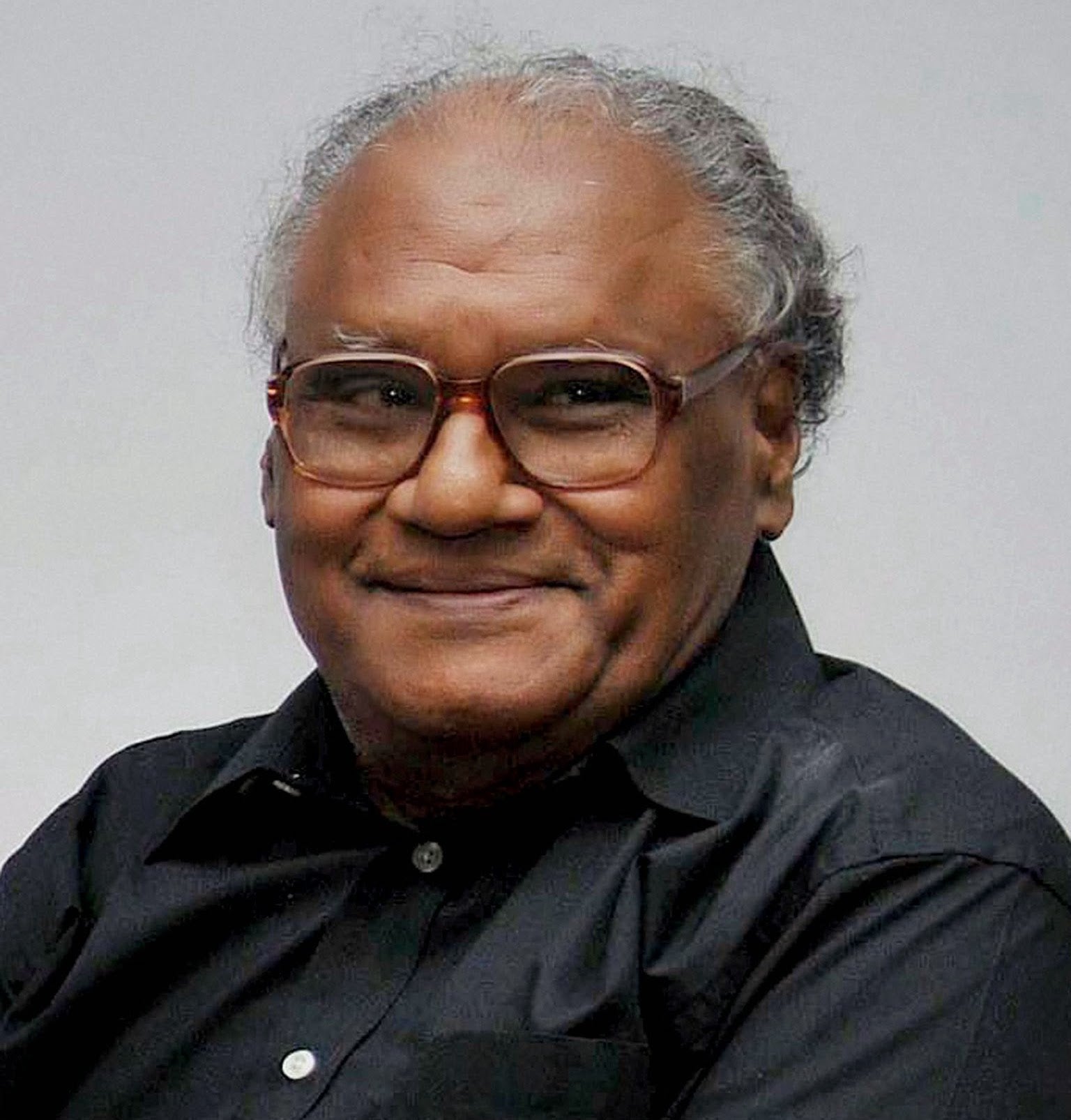
Chintamani Nagesa Ramachandra Rao: Professor CNR Rao, a passionate and dedicated scientist, is a multi-faceted living legend. He is the only living Indian scientist who is a Bharat Ratna, the country’s highest civilian honour. It was awarded to him for his lifelong commitment to high quality science, his exemplary achievement, and his leadership over the decades. Rao ranks easily as one of the most prominent chemists of the world. Typically, a living legend in the academic world is a figure that inspires students and colleagues with his insights, attitudes and work. He is that and much more. He is also an unparalleled leader and mover in Indian science over the last many decades, a farsighted and watchful sentinel for science in India and elsewhere, a great builder of institutions, and a joyous communicator of science to thousands of young people. Some of the major areas of his research are transition metal oxides and other extended inorganic solids (new synthesis and novel structures, metal-insulator transitions, CMR materials, superconductivity, multiferroics etc.), inorganic-organic hybrid materials, nanomaterials including nanotubes and graphene, and artificial photosynthesis and hydrogen generation by photocatalysis and thermal means. Apart he has been awarded numerous awards, scholarships, medals and fellowships.

Elattuvalapil Sreedharan: E. Sreedharan, popularly known as the “Metro Man”, is an Indian engineer who played a key role in the building of the Konkan Railway and the Delhi Metro. In India, millions of people are dependent on public transport and the credit for changing the very face of Indian public transport goes to this enterprising engineer. The man who began his career as a lecturer in an engineering college appeared for the Engineering Services Examination (ESE) and joined the Indian Engineering Service (IES). He first proved his ability as an engineer when he was put in charge of restoring a bridge that had been damaged by a cyclone. He executed the complete work within 46 days as against the six months allotted to this task. Recognized by the government for his brilliance, he was made the in-charge for planning and designing the Kolkata metro, the very first metro in India. He was awarded the Padma Vibhushan in 2008. Moreover, Sreedharan was appointed by the former UN Secretary General Ban Ki-moon to serve on the United Nations's High Level Advisory Group on Sustainable Transport (HLAG-ST) for a period of three years in 2015.

Jayant Narlikar: Jayant Vishnu Narlikar is an Indian astrophysicist. He developed the conformal gravity theory with Sir Fred Hoyle, known as Hoyle–Narlikar theory. It synthesizes Albert Einstein's theory of relativity and Mach's principle. It proposes that the inertial mass of a particle is a function of the masses of all other particles, multiplied by a coupling constant, which is a function of cosmic epoch. Narlikar took up Professorship at the Tata Institute of Fundamental Research (TIFR) in Mumbai, India. At the TIFR, he was in charge of the Theoretical Astrophysics Group. In 1988, the Indian University Grants Commission set up the Inter-University Centre for Astronomy and Astrophysics (IUCAA) in Pune, and Narlikar became the Founder-Director of IUCAA. In 1981, Narlikar became a founding member of the World Cultural Council. Narlikar is known for his work in cosmology, especially in championing models alternative to the popular Big Bang model. He has received many national and international awards and honorary doctorates. India's second-highest civilian honour, Padma Vibhushan, was awarded to him in 2004 for his research work.
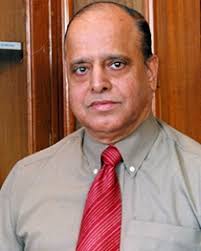
Krishnaswamy Kasturirangan: Dr Kasturirangan’s interest includes research in high energy X-ray and gamma-ray astronomy as well as optical astronomy. Defining India’s most ambitious space based High Energy Astronomy observatory and initiating related activities was also an important milestone under his leadership. He has made extensive and significant contributions to studies of Cosmic x-ray and gamma ray sources and effect of cosmic x-rays in the lower atmosphere. He was responsible for directing the Indian Space programme for over 9 years, as Chairman of ISRO and the Space Commission and as Secretary to the Government of India in the Department of Space. He was earlier the Director of ISRO Satellite Centre, overseeing the development of new generation spacecraft, the Indian National Satellite (INSAT-2) and the Indian Remote Sensing Satellites (IRS-1A and 1B) as well as scientific satellites. He was also the Project Director for India’s first two experimental earth observation satellites, Bhaskara-I and II.
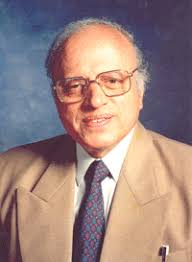
M. S. Swaminathan: He is known for his role in India's Green Revolution, a program under which high-yield varieties of wheat and rice were planted. Swaminathan has been called the "Father of Green Revolution in India" for his role in introducing and further developing high-yielding varieties of wheat in India. When he was a young research scholar in the Wisconsin University (USA), he developed a potato hybrid carrying the frost-resistance gene from a tetraploid wild relative S. acaule. Later, this hybrid potato material was used to develop a frost-resistant potato variety called ‘Alaska Frostless’. Although he was offered an attractive research-cum-teaching position in Wisconsin, MS chose to return to his motherland where he had no job then. His stated vision is to rid the world of hunger and poverty. Swaminathan is an advocate of moving India to sustainable development, especially using environmentally sustainable agriculture, sustainable food security and the preservation of biodiversity, which he calls an evergreen revolution. From 1972 to 1979 he was Director General of the Indian Council of Agricultural Research. He was Principal Secretary, Ministry of Agriculture from 1979 to 1980. He served as Director General of the International Rice Research Institute (1982–88) and became president of the International Union for the Conservation of Nature and Natural Resources in 1988. Owing to the contribution, he was awarded the Shanti Swarup Bhatnagar and many international and national recognizations such as Franklin D. Roosevelt Four Freedoms Award, Franklin and Eleanor Roosevelt Institute, Planet and Humanity Medal of the International Geographical Union, Outstanding Technology Leadership – included among the 50 world leaders by Scientific American.

Malur Ramasamy Srinivasan: M. R. Srinivasan is an Indian nuclear scientist and mechanical engineer. He played a key role in the development of India's nuclear power programme and the development of the PHWR. He worked with Dr Homi Bhabha on the construction of India's first nuclear research reactor, Apsara. Dr Srinivasan was appointed as Chief Project Engineer at the Madras Atomic Power Station. In 1987, he was appointed Chairman, Atomic Energy Commission and Secretary, Department of Atomic Energy, with responsibility for all aspects of the Indian Nuclear Program. He has been responsible for a total of 18 nuclear power units, of which seven are in operation, another seven under construction, and four still in the planning stages. He received several prestigious awards including the Padma Vibhushan Award.
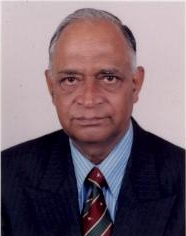
Man Mohan Sharma: MM Sharma made monumental contributions to chemical engineering science and technology. His studies on Bronsted based catalysis in CO2 hydration (published in the Transactions of Faraday Society) and subsequently kinetics of COS absorption in aqueous amines and alkanolamines brought out linear free energy relationship between CO2 and COS absorption in solutions of amines and alkanolamines. He has contributed extensively on the role of microphases in multiple reactions which he pioneered. Professor Sharma is a recipient of a number of prestigious academic honours and awards including the SS Bhatnagar Prize in Engineering Sciences, Moulton Medal of the Institution of Chemical Engineers, and UK Leverhulme Medal of the Royal Society. He was awarded the Padma Vibhushan by the President of India. Subsequently, he was elected Honorary Fellow by the Royal Academy of Engineering and is Foreign Associate of the US National Academy of Engineering.
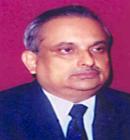
Palle Rama Rao: Rama Rao began his research career with X-ray diffuse scattering studies of structural imperfections. He then turned to high temperature mechanical behaviour of metallic materials (tensile, creep, fatigue and fracture characteristics) some of which were undertaken for the first time in the country. He became involved in research-based alloy development during his tenure at the Hyderabad defence laboratory. Notable among these efforts is the development of an ultrahigh strength high fracture toughness low alloy steel. His current research interest is in understanding the effects of solutes on mechanical properties of magnesium and its hot workability. Rama Rao contributed to setting up the Heavy Alloy Penetrator Plant, Tiruchirapalli, the first full-fledged ordnance factory to come up in India based on indigenous R&D, the International Advanced Research Centre for Powder Metallurgy & New Materials, Hyderabad, Non-Ferrous Materials Technology Development Centre, Hyderabad, National Institute of Ocean Technology, Chennai, Safety Research Institute, Kalpakkam and the Technology Development Board of DST. He received several prestigious awards including the Padma Vibhushan Award.
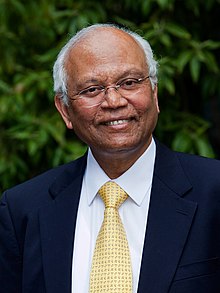
Raghunath Anant Mashelkar: Mashelkar and co-workers researched on smart hydrogels, which are water swollen crosslinked networks of polymers. They respond to stimuli such as pH, temperature, electric field, etc. and undergo volume phase transition. They have enormous potential as sensors, actuators, soft robots, controlled drug delivery systems, etc. Mashelkar and co-workers discovered and demonstrated for the first time a class of smart hydrogels that exhibited unique biomimicking functions: thermoresponsive volume phase transitions similar to sea cucumbers, self-organization into core-shell hollow structures similar to coconuts, shape memory as exhibited by living organisms, and metal ion-mediated cementing similar to marine mussels. He is former Director General of the Council of Scientific and Industrial Research (CSIR). He was also the President of Indian National Science Academy, President of Institution of Chemical Engineers as also the President of Global Research Alliance. He was also the first Chairperson of Academy of Scientific and Innovative Research (AcSIR). He is a Fellow of the Royal Society, Fellow of the Royal Academy of Engineering, Foreign Fellow of US National Academy of Engineering and Foreign Associate of National Academy of Science (USA) and recipient of many significant awards including Padma Vibhushan Award.
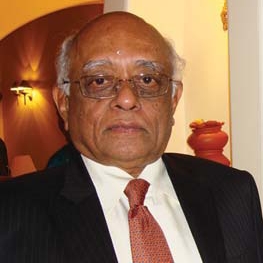
Rajagopala Chidambaram: Dr Chidambaram's early work was on NMR. His study of NMR in crystalline hydrates led him to postulate the widespread existence of bent hydrogen bonds in solids and the proposal of a bent hydrogen bond model for hexagonal ice. He initiated research in neutron crystallography and high-pressure physics in BARC. The studies of his group on hydrogen bonds in amino acids led to the development of potential functions for bent N-H-O bonds and a methodology for delineating the hydrogen bond pattern in the active sites in proteins. The 'high pressure physics group' established by him has done extensive work on equation of state and phase transitions at high pressures. He played a leading role in the design and execution of the Peaceful Nuclear Explosion experiment at Pokhran (1974) and also led the DAE team, which designed the nuclear devices and carried out the five Pokhran tests (1998) in cooperation with Defence Research and Development Organisation. He is a Fellow of the Indian Academy of Sciences, Bangalore, the National Academy of Sciences (India), Allahabad, the Indian National Academy of Engineering, Institute of Physics, London, and the Third World Academy of Sciences (TWAS) along with the recipient of many significant awards including Padma Vibhushan Award.
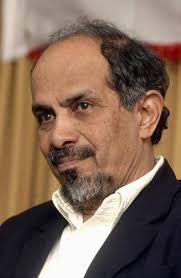
Roddam Narasimha: R Narsimha is an Indian areospace scientist and fluid dynamicist. He was formerly a Professor of Aerospace Engineering at the Indian Institute of Science, Director of National Aerospace Laboratories (NAL) and the Chairman of Engineering Mechanics Unit at JNCASR, Bangalore. He is presently an Honorary Professor at JNCASR and concurrently holds the Pratt & Whitney Chair in Science and Engineering at the University of Hyderabad. He has been awarded the Padma Vibhushan, India's second highest civilian award, in 2013. Narasimha’s research has been chiefly concerned with Aerospace Fluid Dynamics and certain related problems in the atmosphere. He has made extensive studies of transitions between laminar and turbulent flow (going in either direction), the structure of shock waves, various characteristics of fully developed turbulent flow (e.g. their memory, the bursting phenomenon in boundary layers), the fluid dynamics of clouds, near-surface temperature distributions and eddy fluxes in atmospheric boundary layers. He has been closely associated with Aerospace technology development in India at both technical and policy-making levels. During 1977-79, he was the Chief Project Coordinator at Hindustan Aeronautics Limited. He received several prestigious awards including the Padma Vibhushan Award.

Vasudev Kalkunte Aatre: Dr. Aatre is the Founding President of the Institute for smart Structures and System (ISSS) in India. He was instrumental in initiating the first National Program on Smart materials (NPSM) in India. After its successful completion, he has recently initiated another major National Program on Micro and Smart Systems (NPMASS) of which he is the Chairman. Aatre joined DRDO at the Naval Physical & Oceanographic Laboratory (NPOL), Cochin, and became its Director in 1984. He was later appointed as Chief Controller (R&D) of DRDO. In February 2000, he replaced Abdul Kalam as the Director General of DRDO and SA to RM, serving as scientific advisor to the then Defence Minister, George Fernandes. Dr Aatre was awarded the Padma Bhushan award in 2000 by the then President K. R. Narayanan. He was bestowed with Padma Vibhushan award, India's second highest civilian award in 2016.
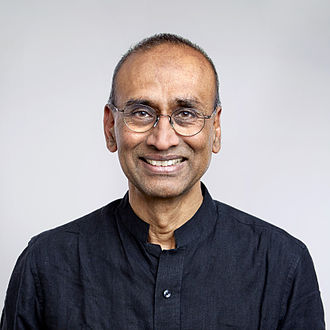
Venkatraman Ramakrishnan: V. Ramakrishnan is internationally recognised for determination of the atomic structure of the 30S ribosomal subunit. Earlier he mapped the arrangement of proteins in the 30S subunit by neutron diffraction and solved X-ray structures of individual components and their RNA complexes. Fundamental insights came from his crystallographic studies of the complete 30S subunit. The atomic model included over 1500 bases of RNA and 20 associated proteins. The RNA interactions representing the P-site tRNA and the mRNA binding site were identified and the likely modes of action of many clinically important antibiotics determined. In 2009 he shared the Nobel Prize in Chemistry with Thomas A. Steitz and Ada Yonath, "for studies of the structure and function of the ribosome". He was elected President of the Royal Society for a term of five years. He received India's second highest civilian honour, the Padma Vibhushan, in 2010 and many distinctive prestigious awards for the research.
Our Independence day respects extend to the scientists who are largely responsible for Indian science as it stands today.